Song of the Needle

A mother, wife, daughter, sister, a farmer, a mason, a carpenter, a cattle rearer, a sweeper, a washer, a cook, an individual, a woman and at last an artisan trying to live with peace and pride. Such are the women of the Meghwal community from Rajasthan.
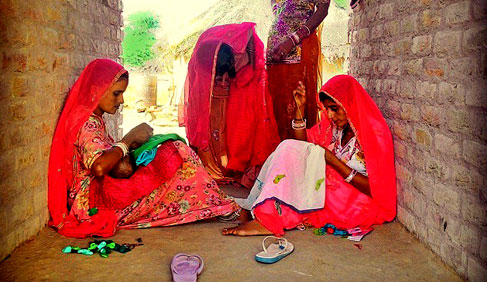
Originally, migrants from Pakistan, these Hindustani folks settled in villages lining the Indian border. Cattle rearers and agriculturists by occupation, later, with the support of Indian government they were allocated agricultural land. Soon after which they migrated to the present day Rajasthan. Their language is a mix of Hindi, Sindhi and Urdu…
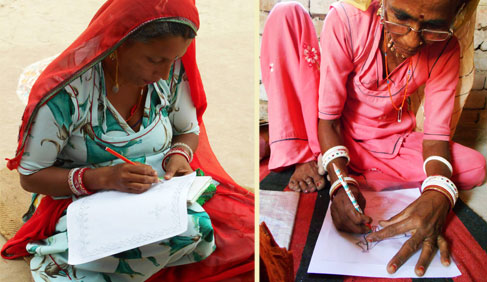
While men go to the field, women are occupied in household activities, managing children and assisting in agriculture. They learnt it at an early age, since the average age of marriage is 18 years, sometimes even earlier…. They live in nuclear families as a part of their custom. An average house has 7-8 members including 3-4 children.
The months of March to April and October to November bring the harvest and their festivals like Deepwali, Navratri, Teej etc. During this time a woman or a girl’s day begins at 4am and ends at 10pm. Nonetheless, these women find time to embroider.
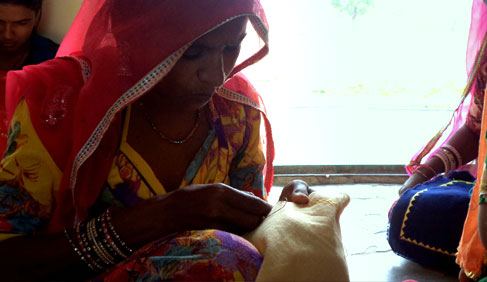
Hand embroidering has ever since been a part of these dessert dwellers as an everyday wearable and the mark of one’s skills, for instance, during marriages, which still happen within the caste. Every gift to the groom is hand embroidered, even the most unimaginable object like money, bidi, mouth freshener packets etc are put along to decorate the embroidered patch!!
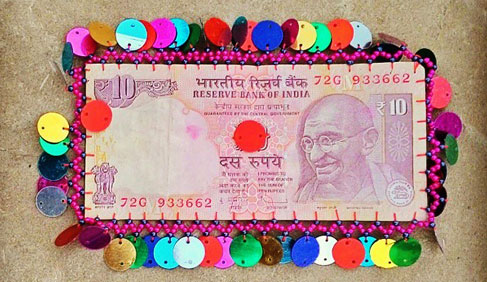
They practice many types of embroideries, namely Soof, Kharek and Pakko. With modernization and government initiatives they have also learnt new contemporary stitches, although Pakko style continues to be their forte. Pakko embroidery is done by the Sodha, Rajput & Meghwal communities. Pakko literally means solid. The designs and motifs are very similar to Ahir, but slightly more geometric. The outline is done with chain stitch, but the filling is a dense variation of buttonhole stitch and open chain stitch, which gives an embossed look.
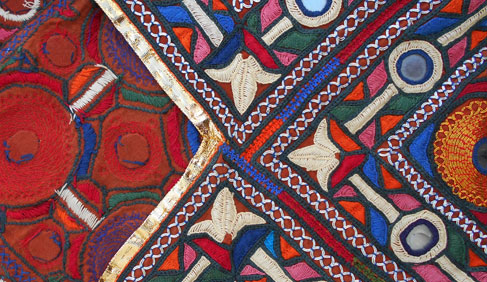
Mirrors are used frequently. Like Ahir, originally the designs were done directly on the fabric without any stencil, the wrap and weft are their guides and needle is their brush.
Local names of the stitches are:
Cross stitch – Kanadaa
Mirror stitch – Kaanch (Pakka)
Chain stitch – Lath
Open chain stitch – Sankali/Pakki jaat
Lazy daisy stitch – Chirki ki panadi
To them, embroidering has been an expression, a reason to sit together, memories handed over by a mother to her daughter and a matter of pride. The people are culturally rooted. Age old practices are still being followed, except those that have lost relevance due to globalization.
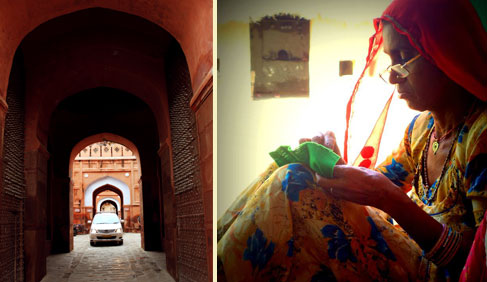
Yes!! Globalization!!It is not a new term for them, as worldwide channels are available to these people through dish TV. With electricity reaching far off villages and television box getting affordable, a five year old wearing jeans, dancing to the tunes of Dabang with sunglasses dangling at the back of his collar might not be a rare sight but the parameters of true success for a country whose economy and essence is based on its legacy of skilled artists- artisans, a country where every person, cluster, village was not only self-sufficient and sustainable but opulent and openly sharing its knowledge and wealth with others… The parameters will truly be achieved when that five year old grows up to take pride in what he or she was born with and will know how to steer it to his and his people’s good.


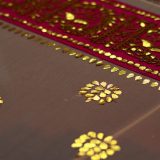








Mrinal Kulkarnin
amazing account of the different tpypes of embroidery